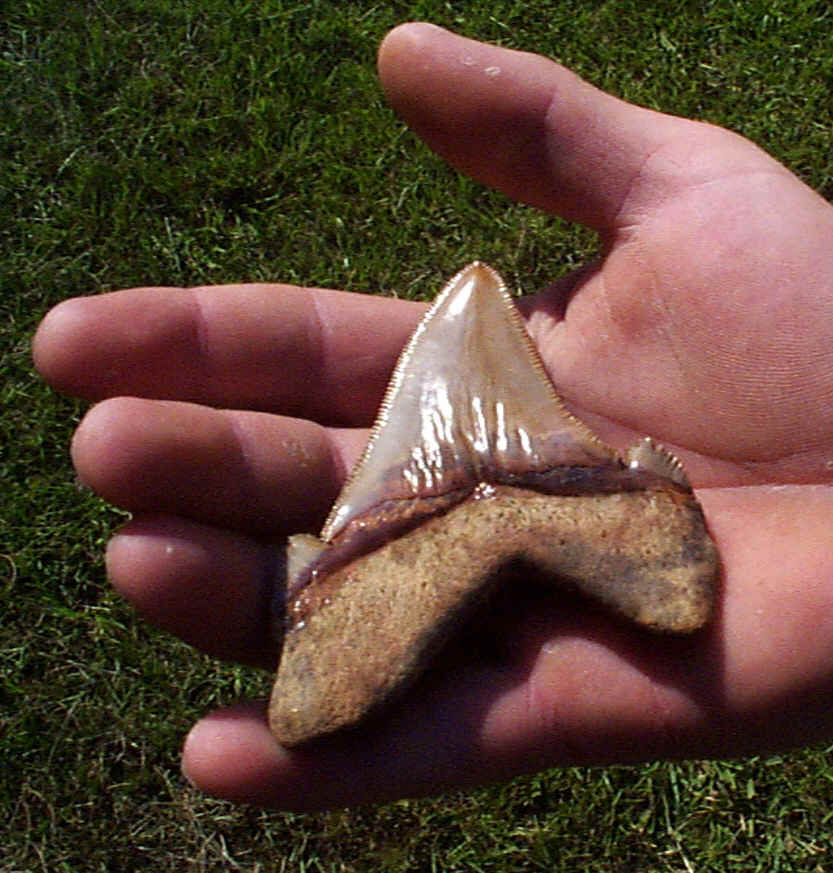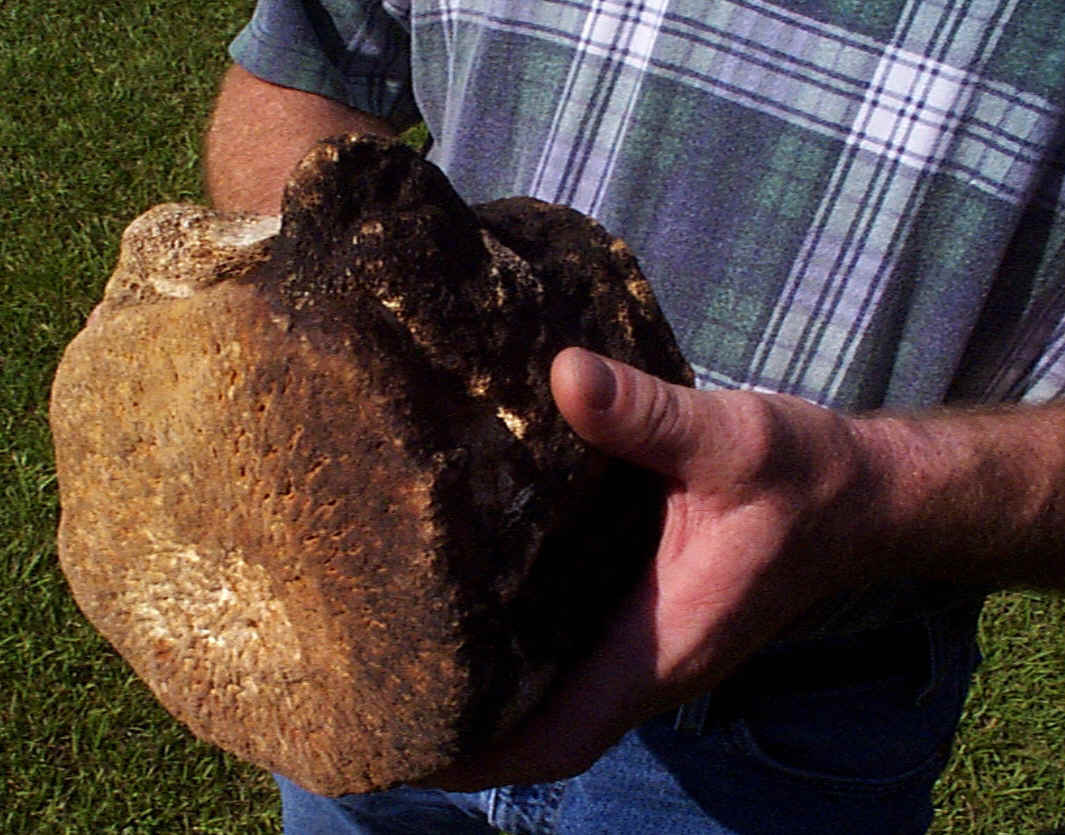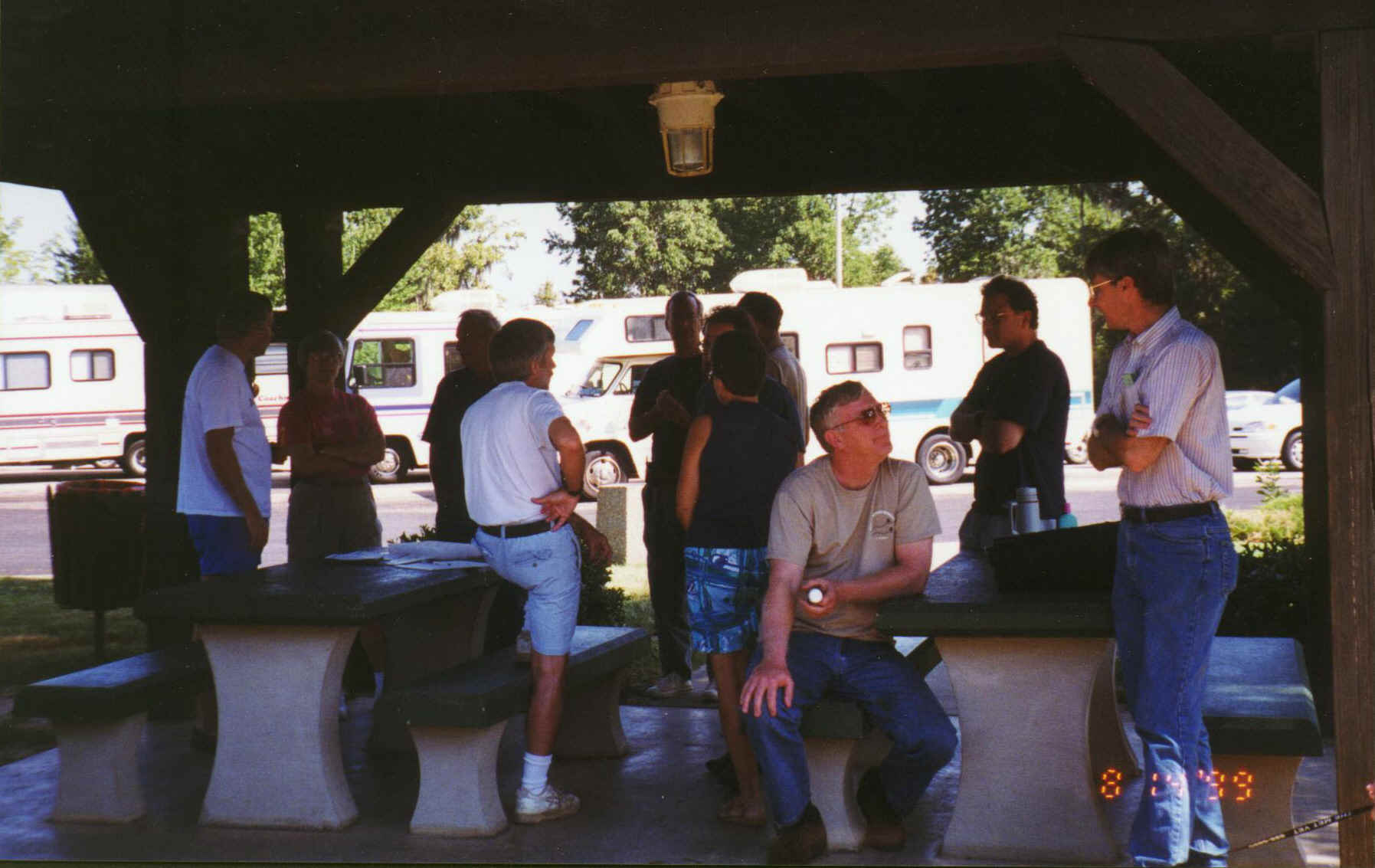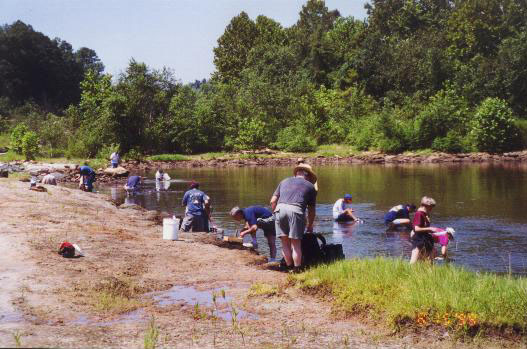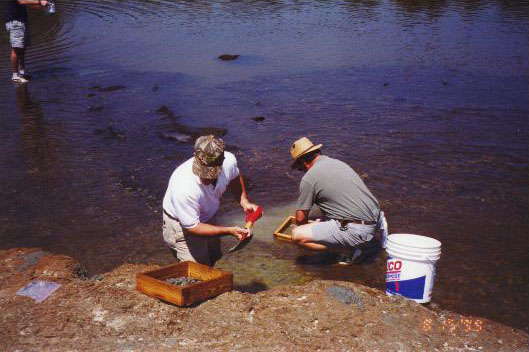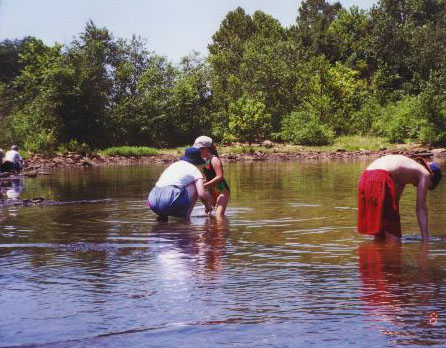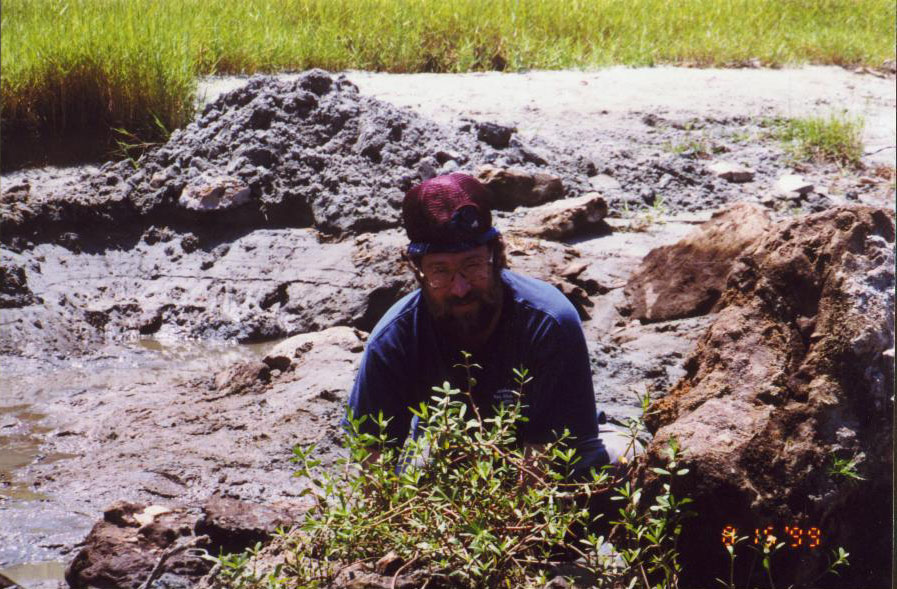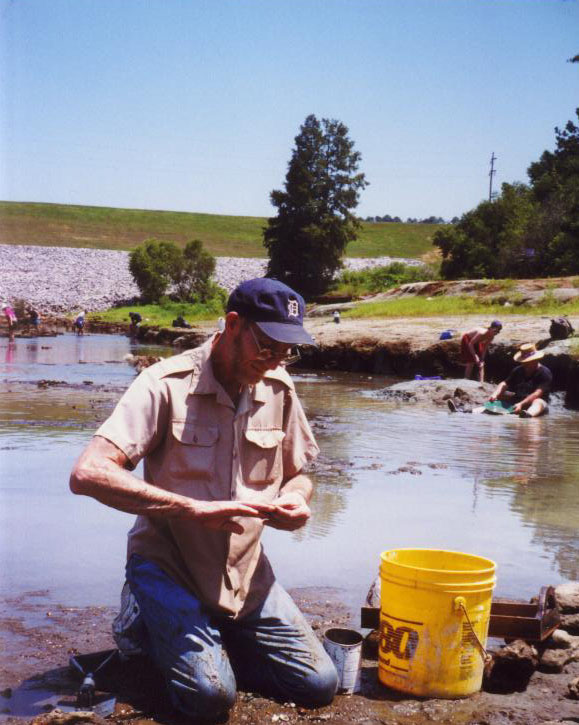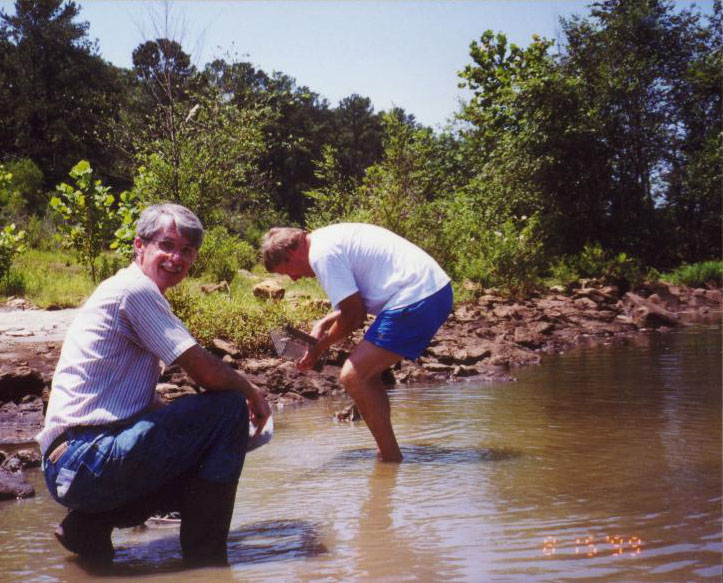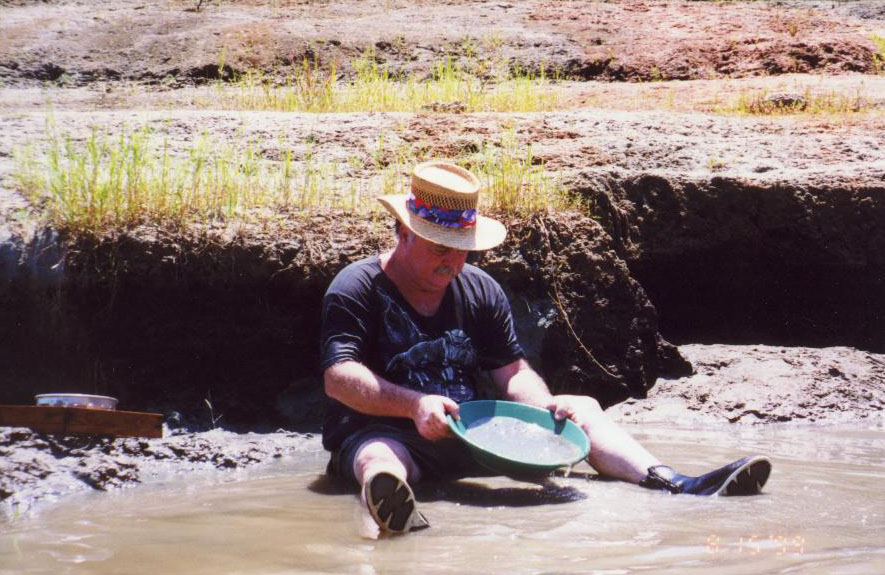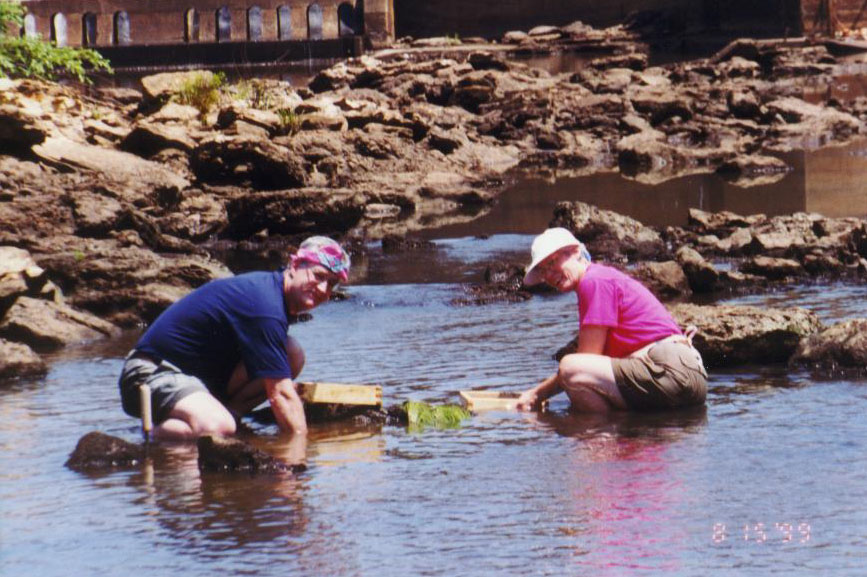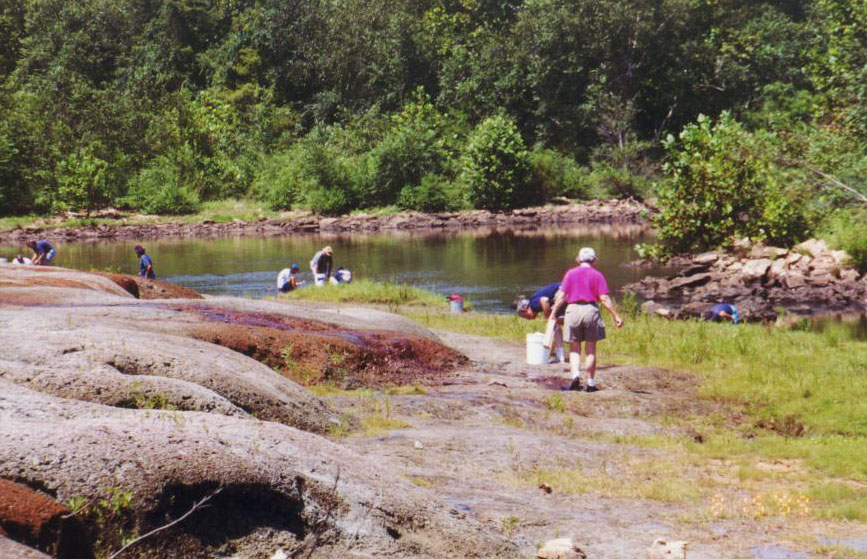June 03, 2006 - Paleocene Fossils, Clarke and Wilcox Co, AL
Today BPS went way down south to Clarke County, Alabama. We were quite excited because this was a new site Steve found, and we were chomping at the bit, ready to go. We found a good variety of bivalves and gastropods, a few shark teeth and ray teeth. The most numerous fossil we found is Flabellum cuneiforme pachyphyllum, a type of coral from the upper Lisbon formation. This is unlike any corals we have collected in the past, as it has a flattened shape, as if someone took a horned coral and squashed it. Some were tinted a pinkish color, which made them easy to spot in the mostly white matrix. At least one specimen of Endopachys maclurii was found (looks similar to the flat one, but has two bumps on each flat side), and several very tiny round specimens of Discotrochus orbignianus were found. (Specimens from this site are very fragile, and should NOT be placed in a bucket of water to clean, as they will crumble. Even the ones that look thick and solid. Brush them off dry, or very lightly wet them, then put them where they can air dry, perhaps on a wire screen.)
Later in the day we headed to Wilcox County, Alabama, to some huge road construction rubble piles. These rocks were from the Paleocene, Midway Stage. Several nice nautiloid casts (Hercoglossa ulrichi) were found at this site, as was an extremely nice vertebra, which has not yet been identified. The nautiloids are made of compressed sand, and the actual shell has disintegrated. Though they are very heavy and appear sturdy, if left exposed to the weather, or cleaned with water, they will crumble into a pile of sand.
Update: July, 2006 - on the trip, Martha found a large bone that appeared to some of us to be recent, as it was very lightweight; however, Jun Ebersole and James Lamb of the McWane Science Center asked to examine the bone, and determined it is from the only early whale of this species ever found in the state. The specimen has been sent to an early whale expert for study.
(photos courtesy Steve Corvin and Vicki Lais)

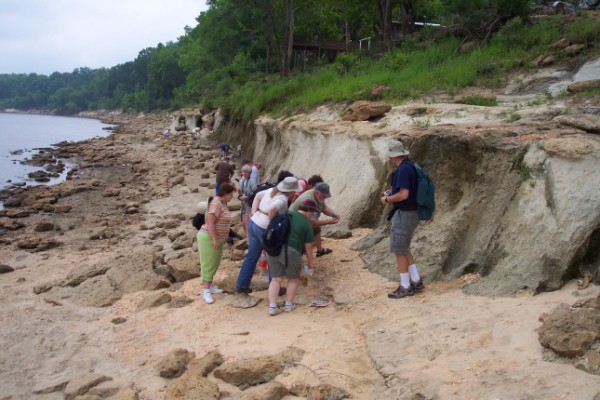
Greg is showing the group some specimens from this site - nice corals.
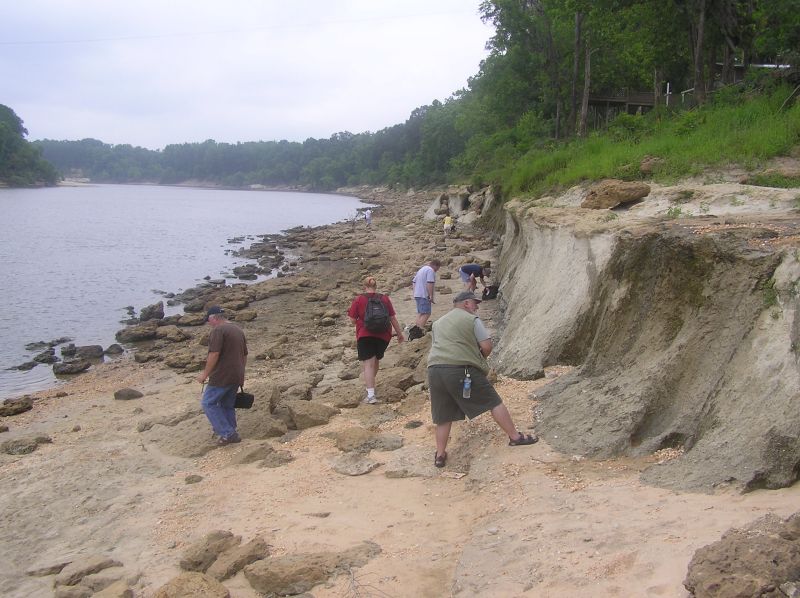
And the group scatters - the low water level makes hunting easy.
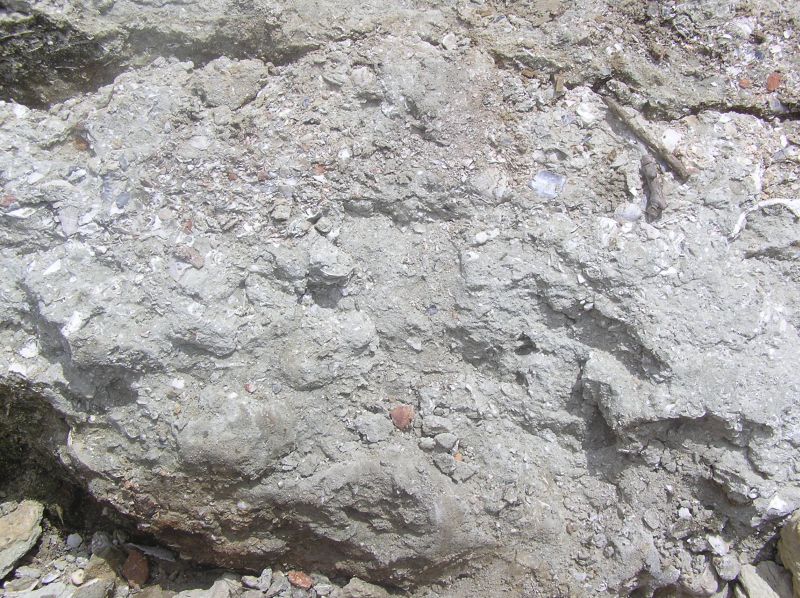
All the rocks at this site are filled with shells and corals. The trick is getting them out whole, as they easily crumble.
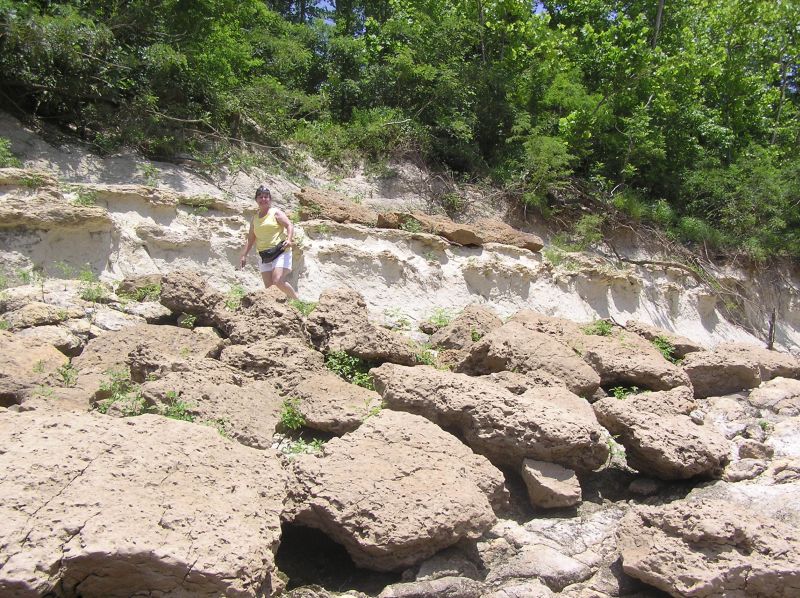
Becky is looking high . . .
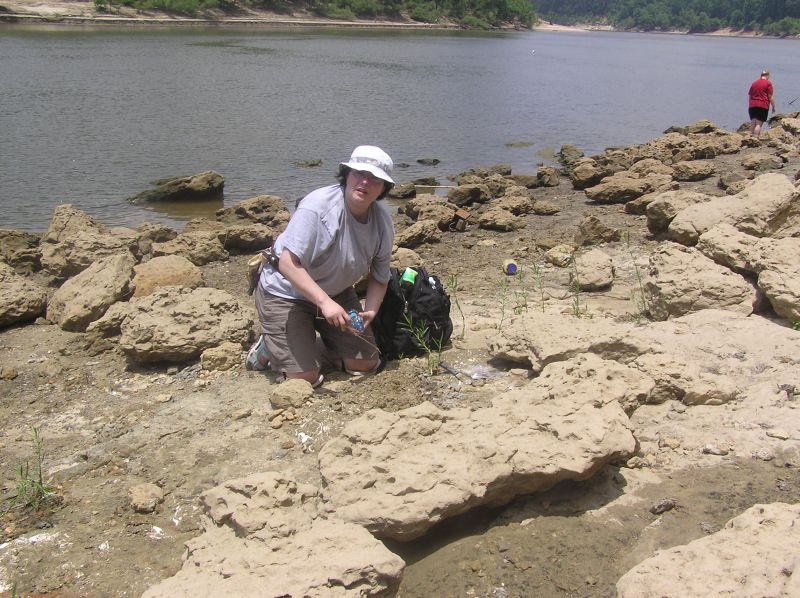
and Anca is looking low!
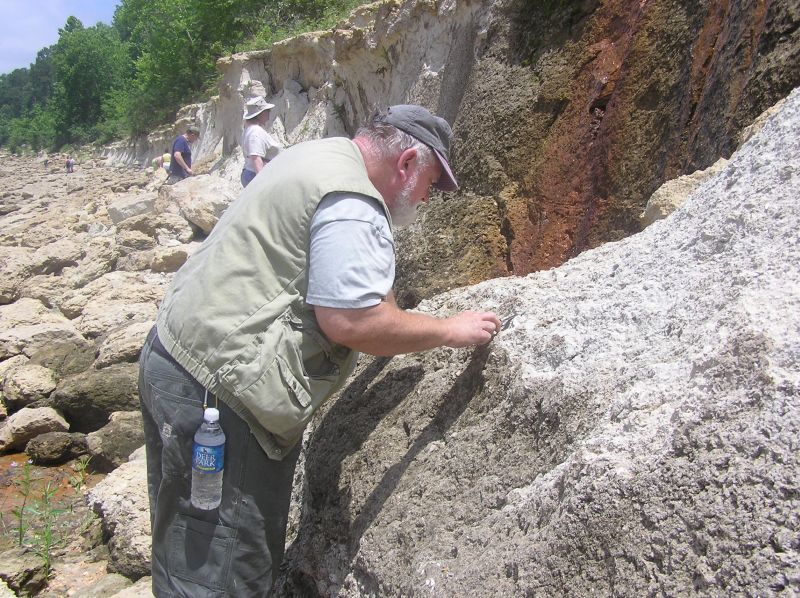
Greg carefully easing out a small coral.
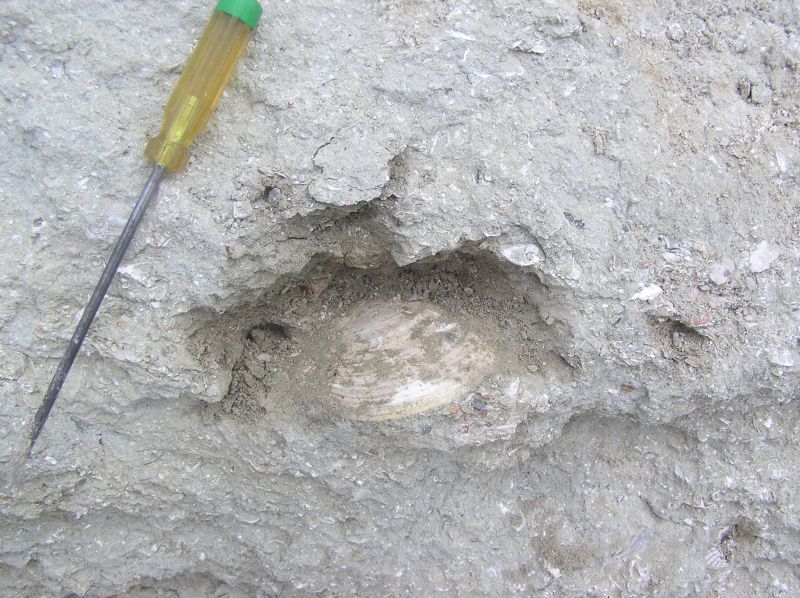
A nice bivalve found by Vicki.
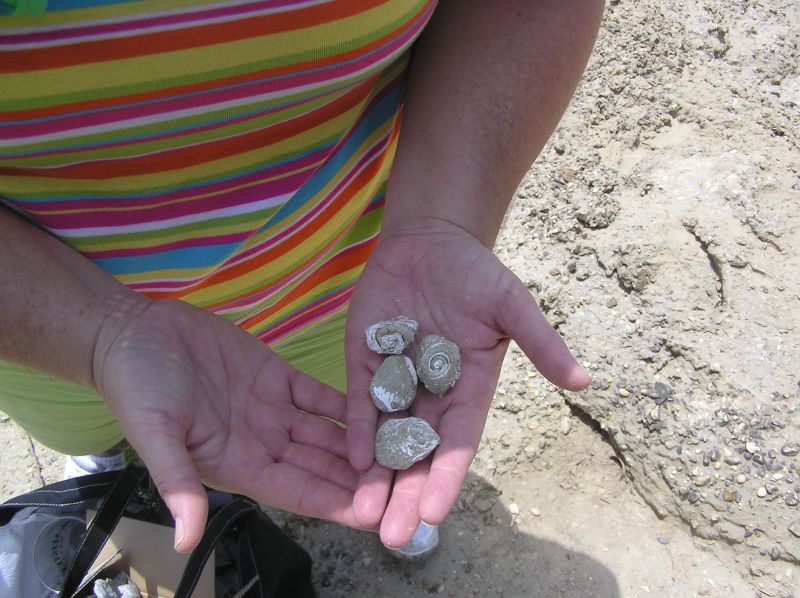
Nice gastropods found by Leisa.

A large piece of bone found by Martha. According to James Lamb, it appears to be another bone fragment from an early whale found in this area. This specimen has been sent to an early whale expert for study.

David is heading to another location. The corals and shells were found from the bluffs to the waterline, while Steve engages in his favorite activity, getting wet!
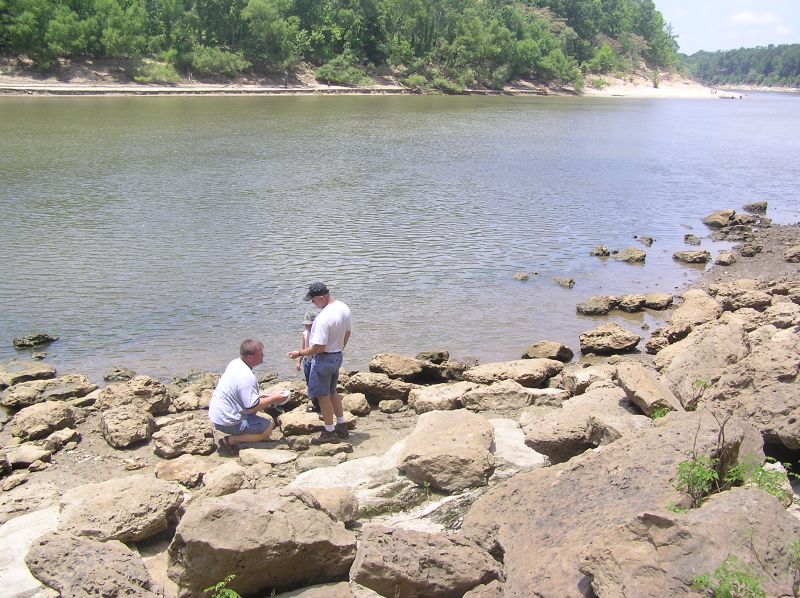
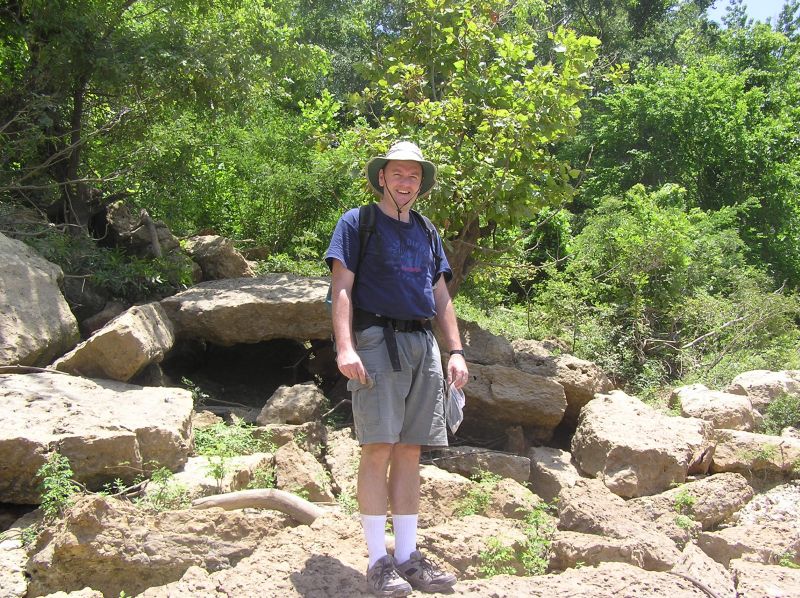
Jan, look over here!
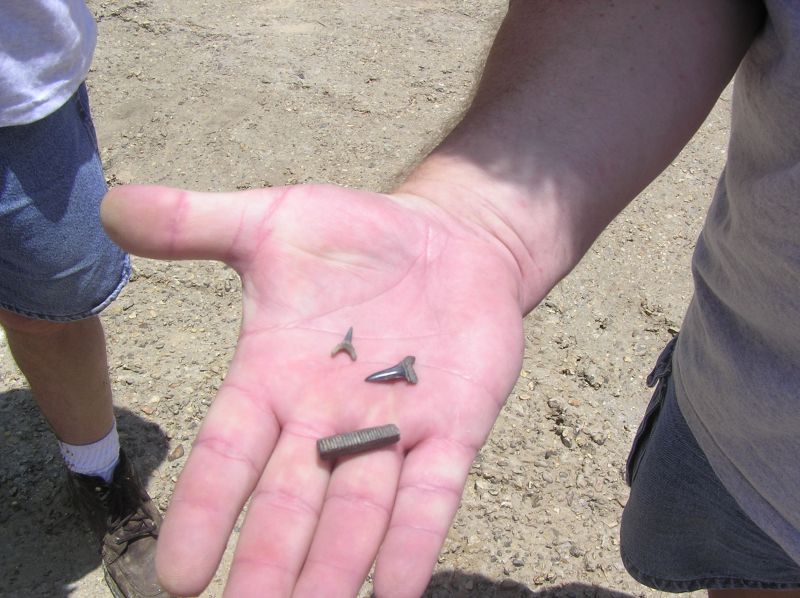
Shark teeth and a ray "tooth".
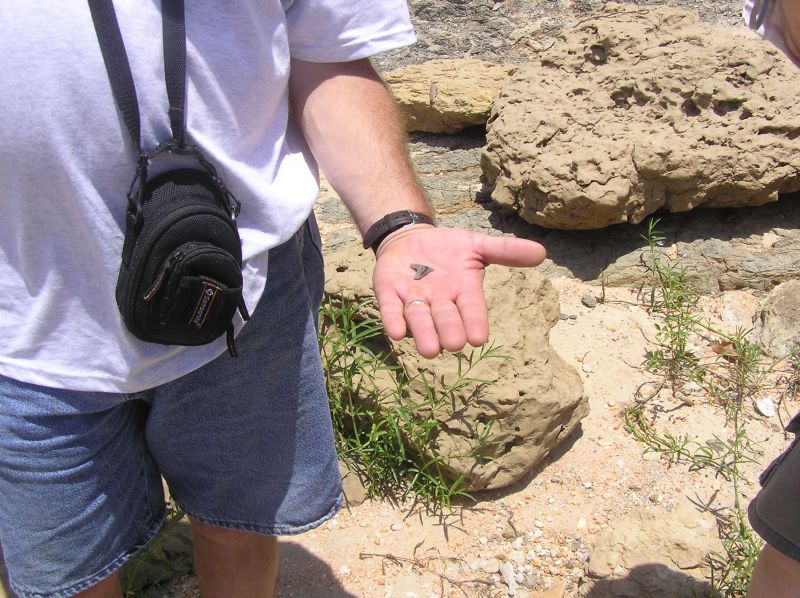
A nice larger shark tooth found by Steve.
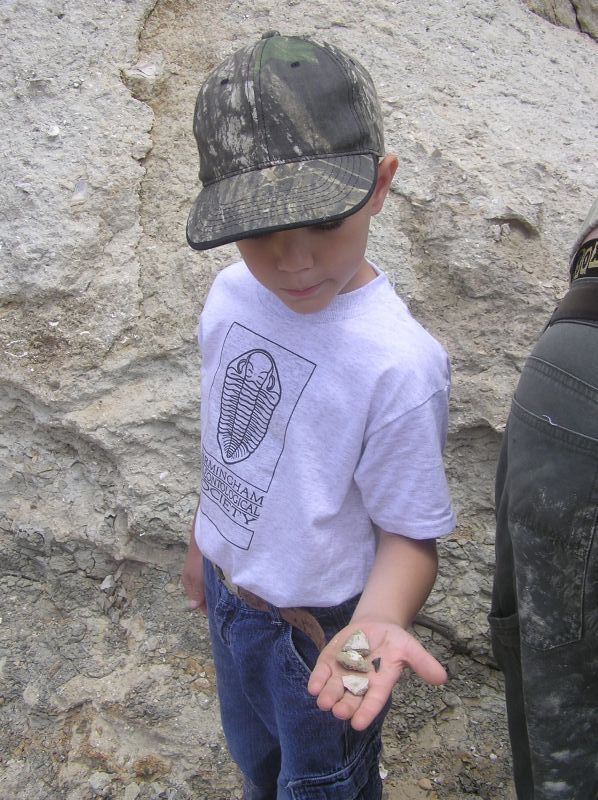
Steven has found coral and a shark tooth.
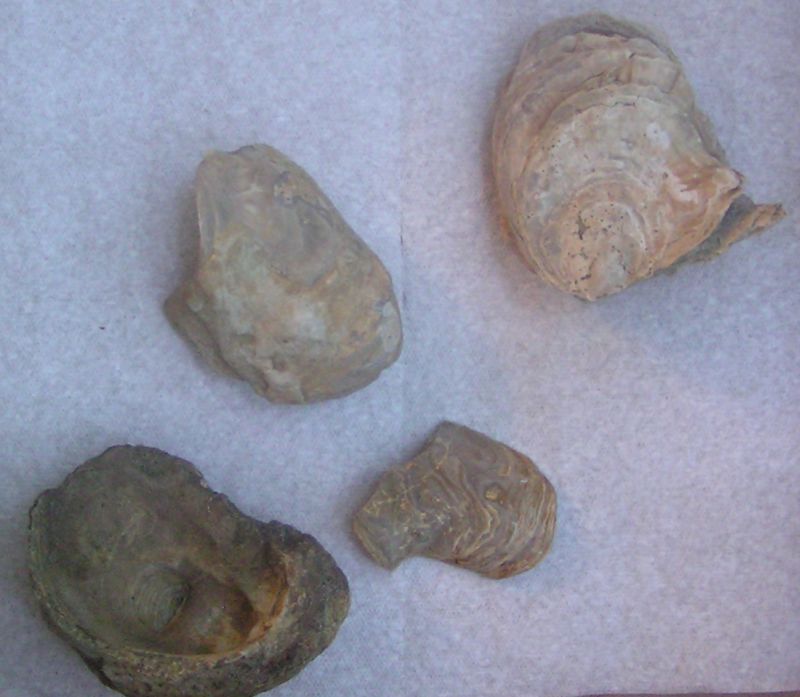
Some shells found by Vicki.
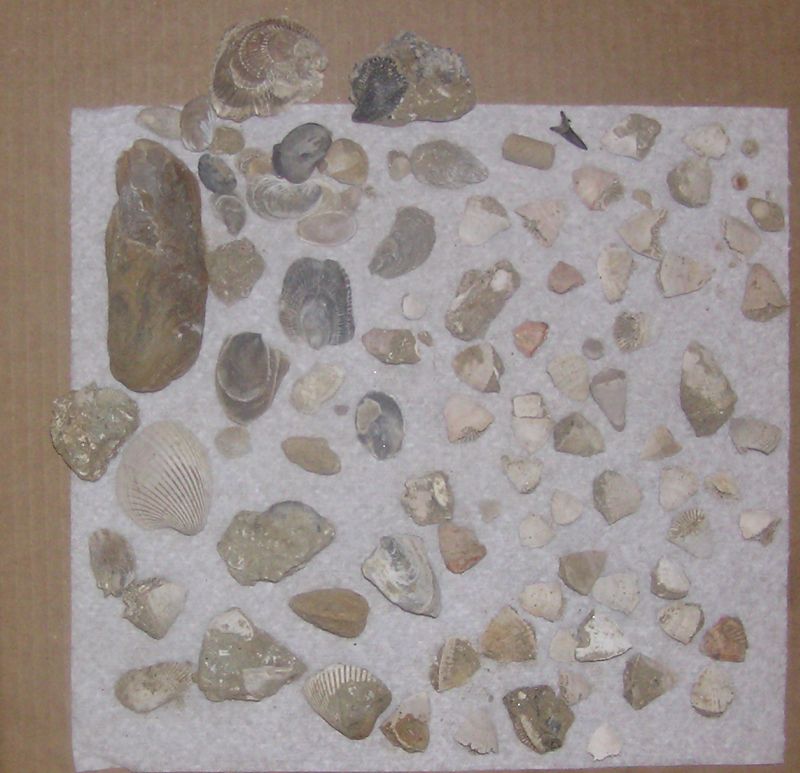
Shells and corals in Vicki's bag.
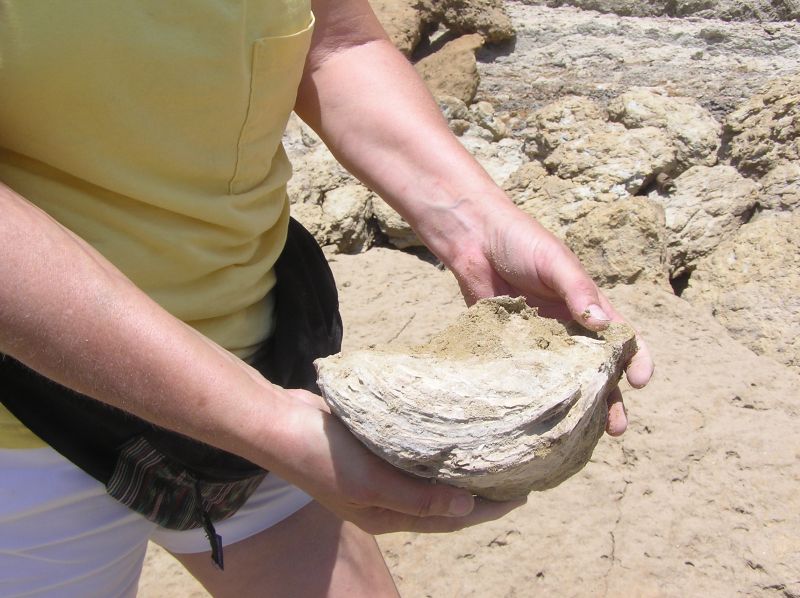
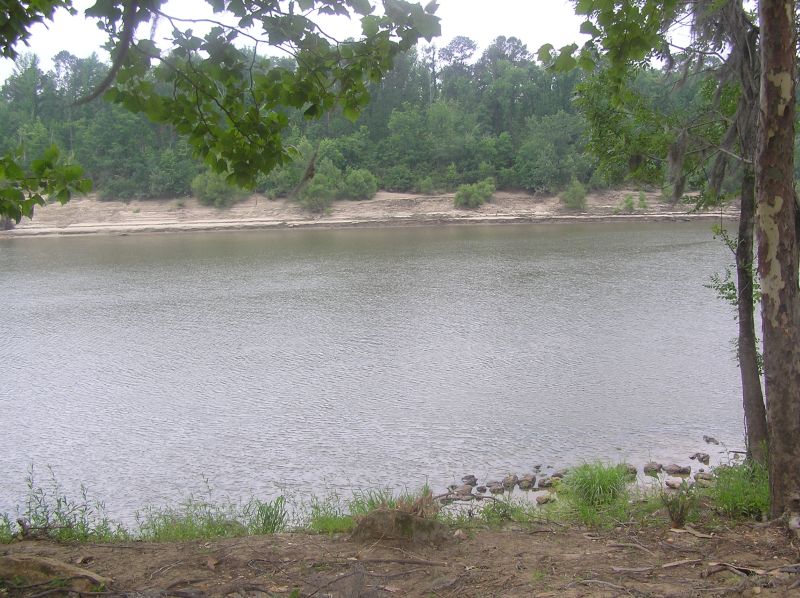
One last look at the river before we head for lunch, then on to the next site.
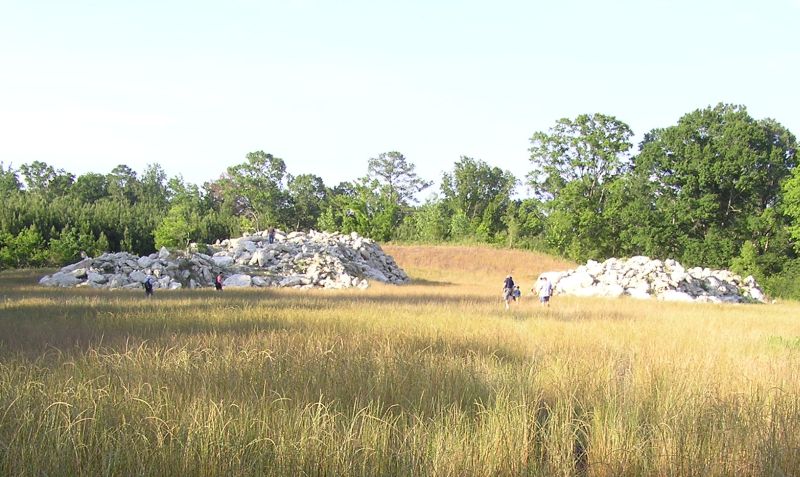
Later in the afternoon we headed north to Wilcox county, to this pile of rocks from nearby road construction.
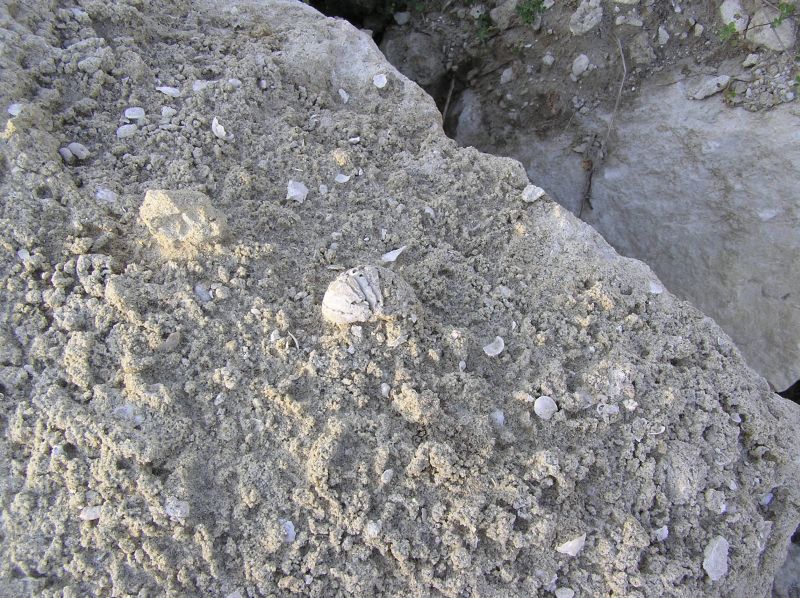
This was spotted on the way in, but the rock was too hard to easily remove the fossil.
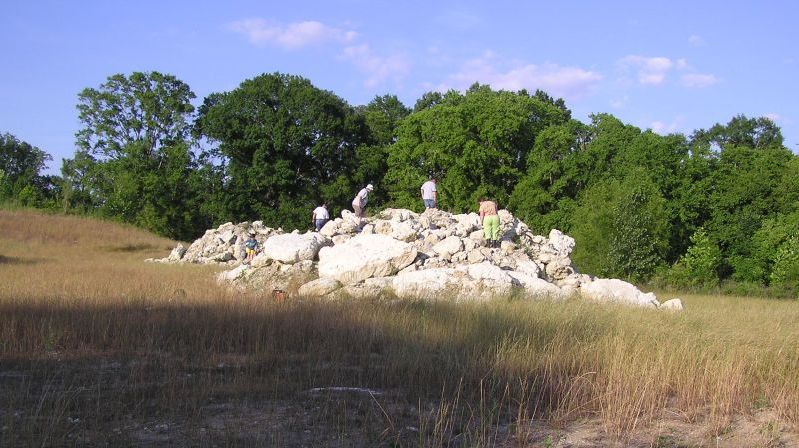
Jan and Lea headed over to this pile of rocks where they found . . .
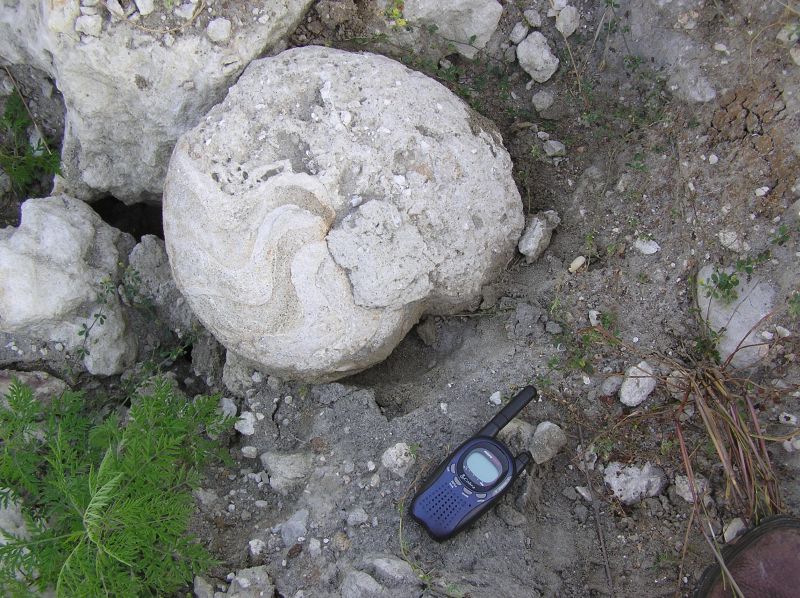
a cast of a very large nautiloid!
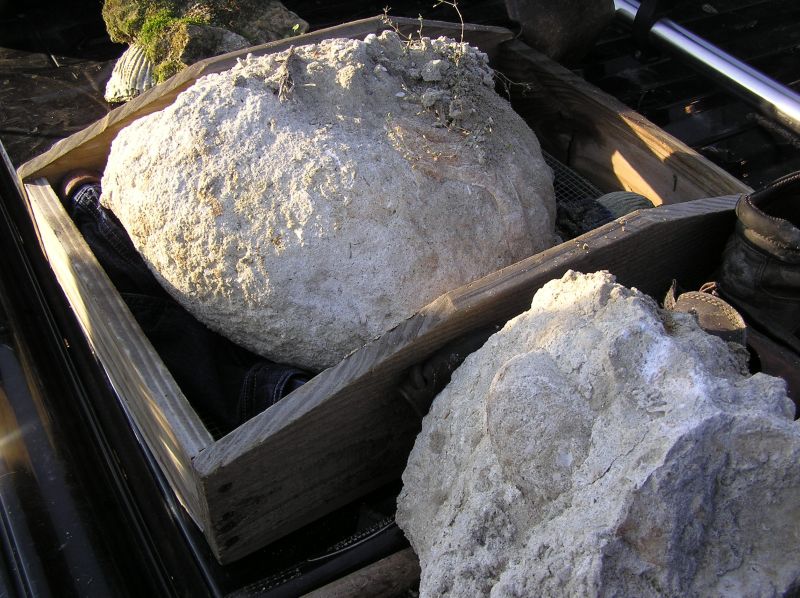
More nautiloid casts.
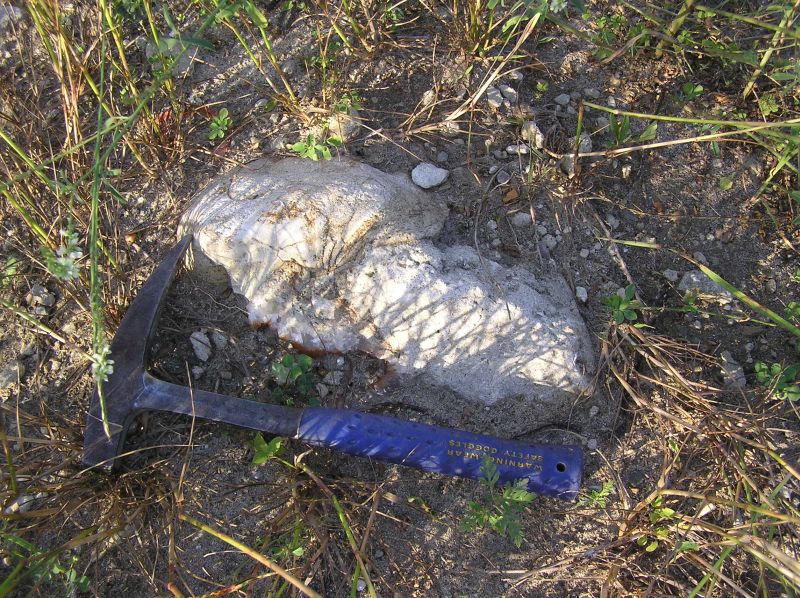
Claire found this piece of nautiloid barely out of the ground. She dug quite a while to work it loose.
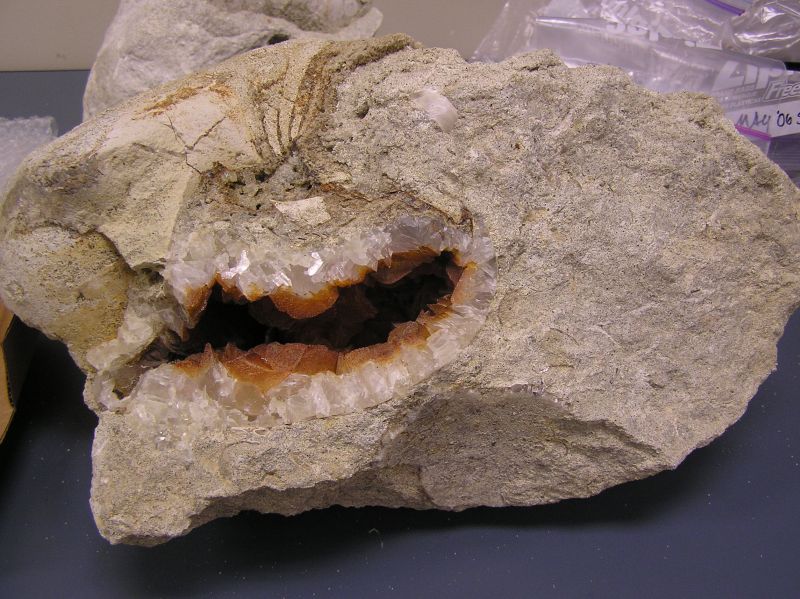
This is what Claire found inside the nautiloid after removing the matrix. Beautiful quartz crystals!
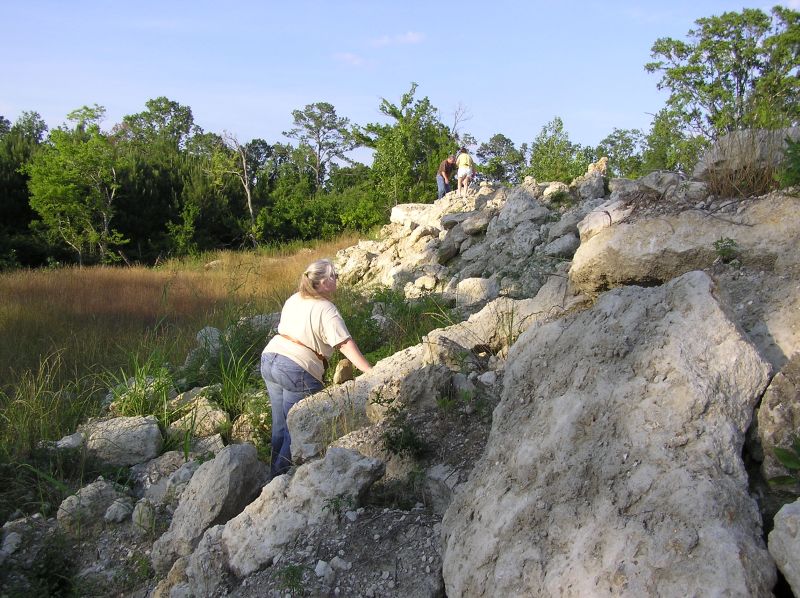
Martha searching for an easy way up, which required the skills of a mountain goat!
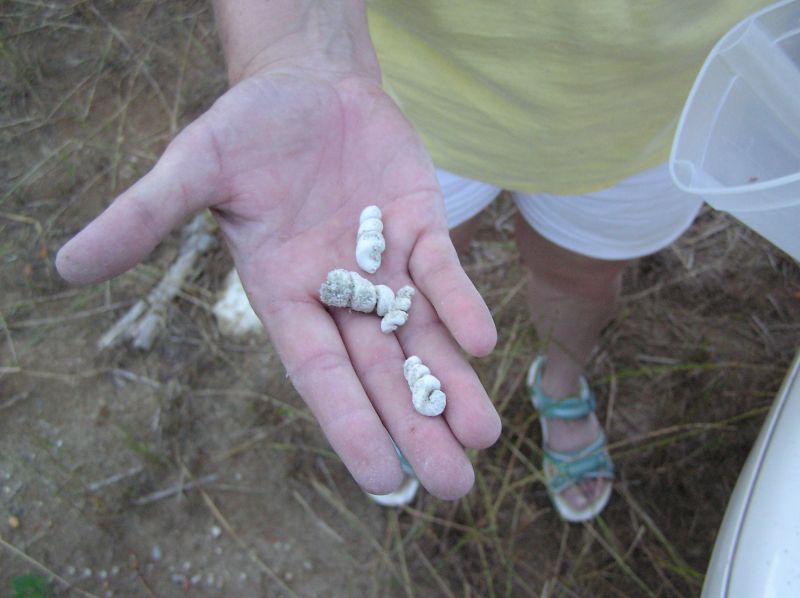
Becky has found some nice gastropods.
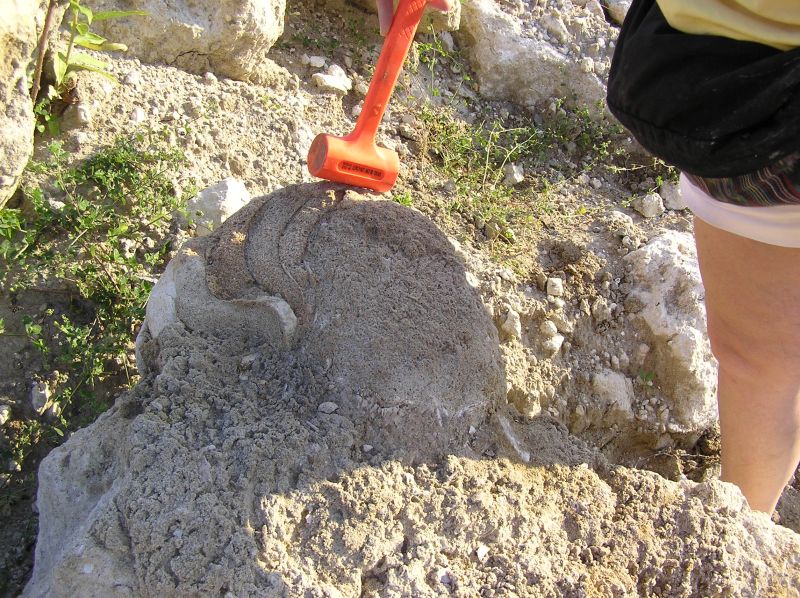
And a large nautiloid cast in extremely hard rock!
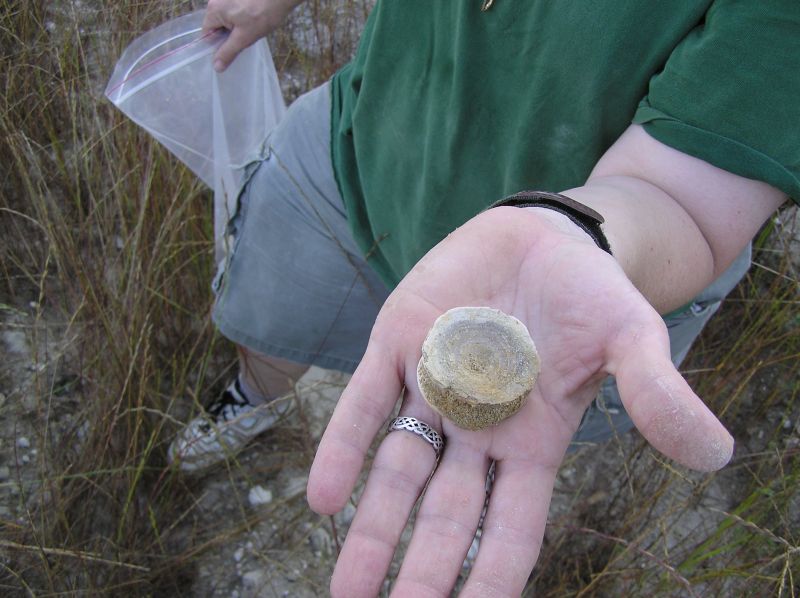
Claire had a very nice day. In a wash near the nautiloid filled with crystals, she found this large vertebra.
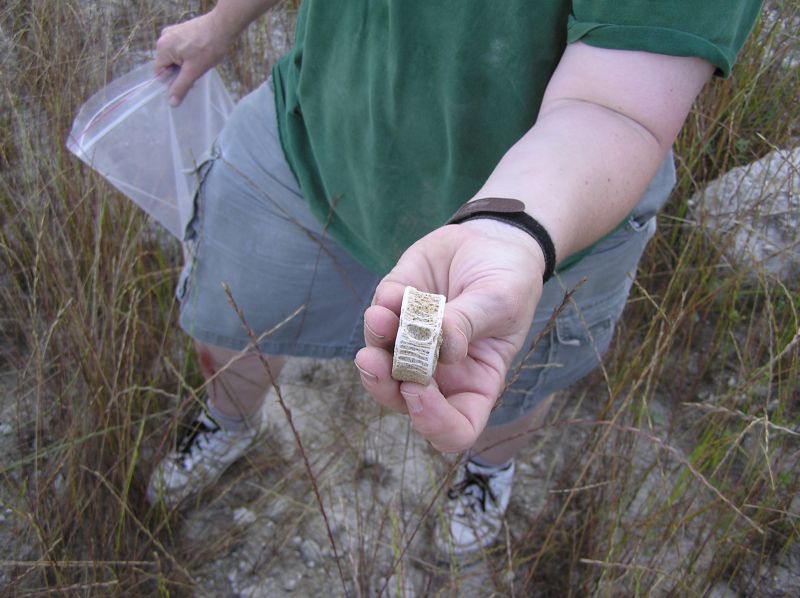
Side view of the vertebra.

As the die-hard fossil hounds called it a day, we were treated to a beautiful sunset!
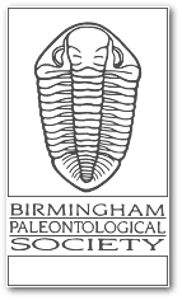
 According to Dr. David C. Kopaska-Merkel of the Geological Survey of Alabama, the lower Tallahatta Formation is early Eocene, or about 50 million years old. He says that the formation is slightly younger than the famous Bashi Marl shell bed, and older than the even more famous Gosport Sand shell bed.
According to Dr. David C. Kopaska-Merkel of the Geological Survey of Alabama, the lower Tallahatta Formation is early Eocene, or about 50 million years old. He says that the formation is slightly younger than the famous Bashi Marl shell bed, and older than the even more famous Gosport Sand shell bed.
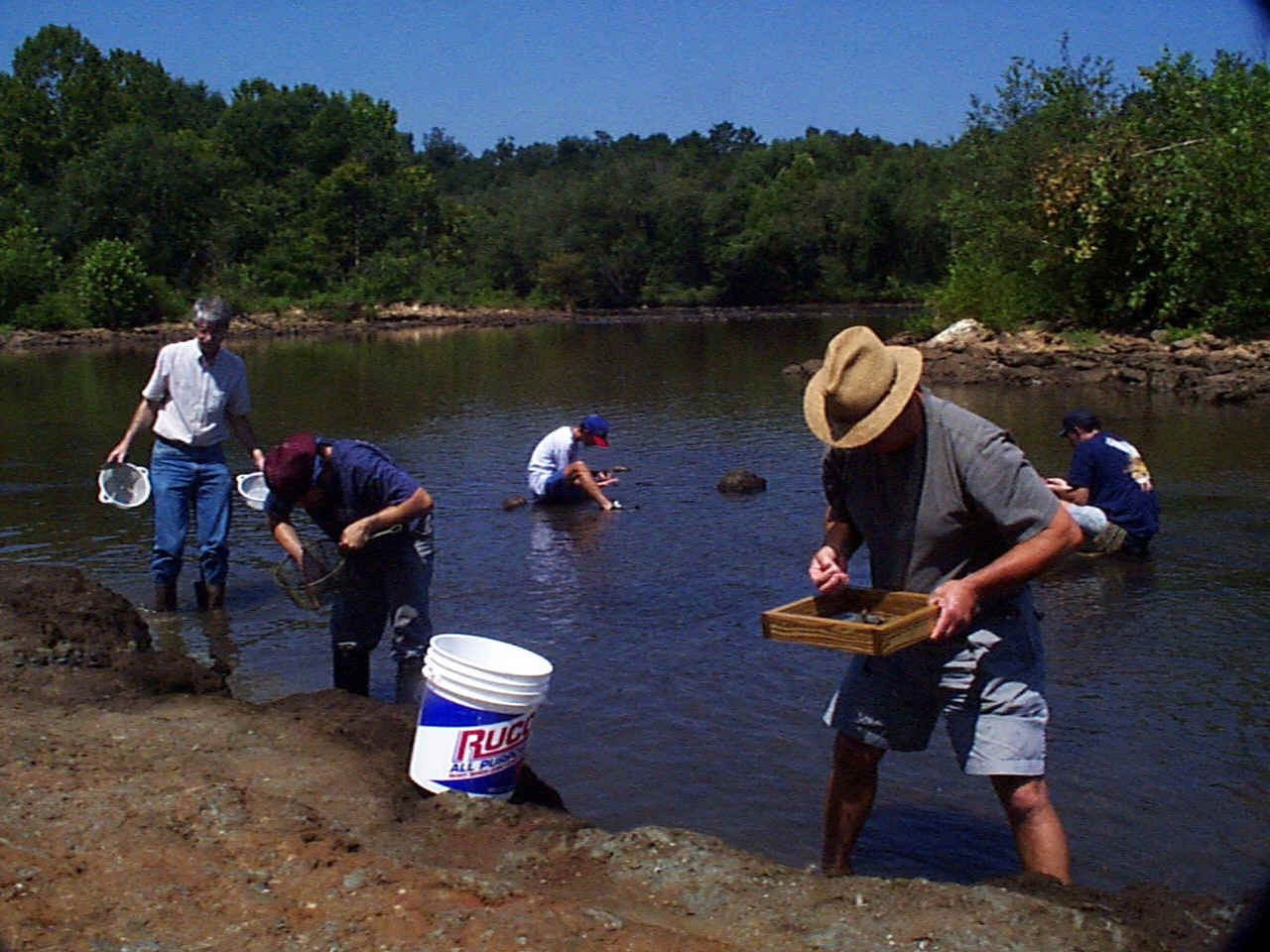 The most abundant fossils seemed to be teeth of sharks, with perhaps up to 11 species represented according to one collector, who told me that he visited the area about 3 times a month.
The most abundant fossils seemed to be teeth of sharks, with perhaps up to 11 species represented according to one collector, who told me that he visited the area about 3 times a month.
